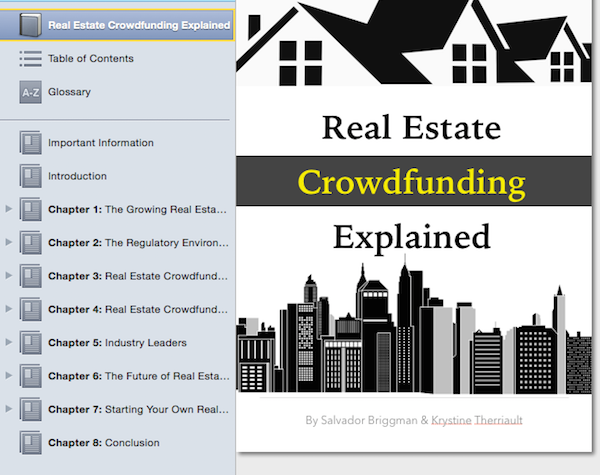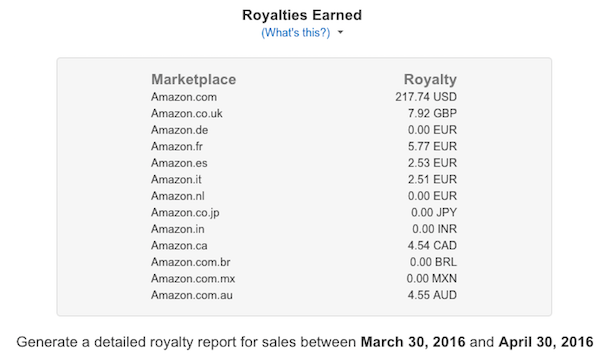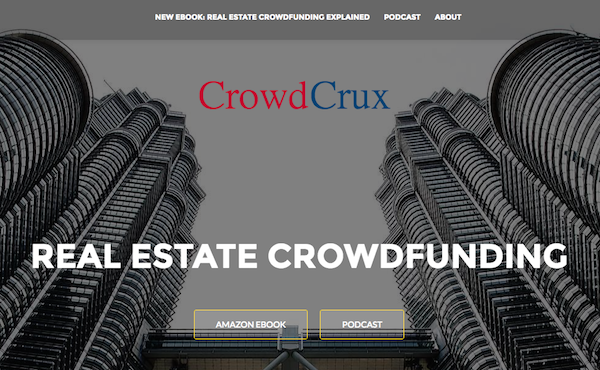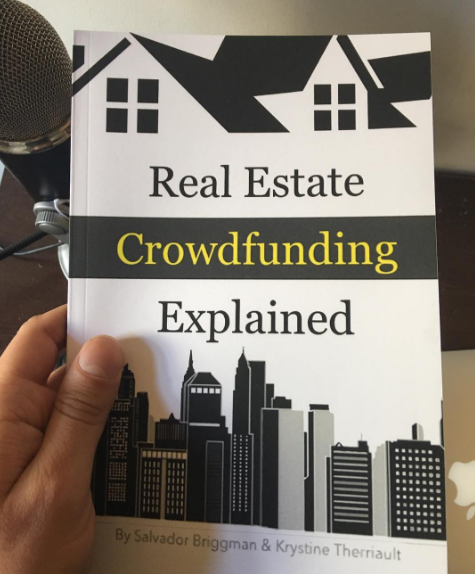Last month, I self-published my first Amazon Kindle eBook! I can’t tell you how exciting it is to be able to sell my latest ebook on Amazon and see the positive reviews start to tumble in.
I have to admit, I was a little scared and there were many unknowns throughout the process. I kept wondering things like:
- How was I going to get a cover?
- How long should it be?
- When should I announce it?
- How much was this going to cost me?
- Am I going to make any sales?
I’m going to share a bit of my story, how my ebook is doing, and advice that I have for other first-time Kindle authors.
1. Write about a topic that has “demand.”
A writers writes for himself. An author writes for an audience. You have to keep this simple distinction in mind as you begin to write your ebook.
Whether it’s fiction or non-fiction, this book must have an audience out there that is interested in this type of content/story OR is looking to learn more about the book’s core topic.
I run the blog, CrowdCrux.com, and because I’ve been blogging for several years, I’m quite aware of the demand out there for different topics or verticals. Going in, I knew that there was an audience for this ebook.
While I wasn’t sure whether or not readers in the Amazon marketplace would be interested, I did know that my existing readers would be interested in the ebook.
2. Pick your writing software and writing schedule
I used to think that there was something sexy about writing. You’d sit in the dark corner of a cafe, take out your leather journal and fountain pen, and the words would just come to you.
This is quite simply not true. There’s nothing sexy about writing. Just like every other activity, like going to the gym or working on a website, you need to set a schedule that you’ll stick to each day.
My co-author and I set out the habit to write 1,500-2,000 words with each session. We wrote the initial drafts in Microsoft word and then copied them into iBooks Author to add formatting and structure.

The reason that I chose iBooks Author was because I thought I might want to offer the guide as a PDF in the future and wanted it to look pretty. I also used iBooks author for two of the other ebooks I’ve written that I sell on my website.
Our goal was to write an ebook between 13,000 – 15,000 words. We didn’t want to add any fluff and wanted to keep the content actionable and practical. It’s meant to be a starter guide. Something that you can breeze through and get a quick and clear understanding of the topic.
3. Create the cover image
For many of you out there, this is probably going to be the most “uncertain” part of putting together the ebook, but really, it’s quite simple.
For my cover image, I used a photo editing software called Pixlr along with a website where I could find free images, called Pixabay. But, that’s because I have some graphic design experience.
If you don’t have any graphic design experience, I would look into:
Kindle also has a cover design creator, which you can use to make your ebook cover.
I wouldn’t recommend putting together the cover until you’ve done some research in your Amazon marketplace category. Remember, the goal isn’t just to create a good-looking cover, but it’s to make one that will stand out among all of the other ebooks for sale.
4. Craft a pre-launch strategy and Timeline
Okay, keep in mind that this is my first Kindle ebook. I’m probably going to look back on my results and laugh in the future. This is the timeline that I had for my ebook.
10/15/15 – Created outline
11/16/16 – First chapter done
3/13/16 – Last chapter done
3/16/16 – Made available for pre-order
3/31/2016 – Published
This came out to be a total time of 5 months and 17 days, or 169 total days. Ideally, I’d like to get this down to 3 months for the next ebook I do.
When I made the ebook available for pre-order, I sent out two emails. One went to a list that was dedicated to the specific topic that my ebook was about. The other email went out to my separate general email list.
I would highly recommend making your ebook available for pre-order for two weeks before it comes out, like I did. While you’re in the writing stage, I’d also set up a lead capture, using LeadPages or another software tool. You’ll be able to market to this email list once the ebook comes out.
If you DON’T have a website for your book or yourself, get one! You can easily set up a website using SquareSpace or WordPress. I’d also recommend looking into these marketing tools.
5. Set realistic sales expectations
Your sales are going to vary from category to category and will vary drastically depending on whether you’re writing a fiction or non-fiction book. I’ll be sharing my sales data below to give you an idea of what I experienced.
In the first month, I sold 77 books, with a total royalty payment of $245.56.
I also put together this chart just to underscore the impact that the pre-order had on sales for the month. The red in the chart below represents pre-order sales.
This was pretty much in line with my expectations. Based on the growth I’ve seen in the past month, I am expecting to continue to see sales into the future for the book. My goal isn’t to make money with this ebook, but rather to get the word out there about this topic and learn more about how Amazon works.
6. Consider separating your book domain from your main domain
I was considering simply having a page on my main website which was dedicated to this Kindle ebook, but instead, I decided to set up a whole new domain all together called RealEstateCrowdfundingExplained.com.
There are a few reasons I decided to do this.
- I’ll be able to measure traffic more easily and customize the user experience.
- It’s easier to reference in podcasts and channels.
- Since the topic I’m writing about is a subsection of my overall brand, I’ll be able to use this domain to really curate the content so that visitors are only seeing the podcasts or articles that they want to see.
Setting up this website was extremely low cost. I used a free wordpress theme and the website is hosted on Bluehost.
If you’re having trouble finding good WordPress themes, check out this great marketplace of different professional looking sites.
I also installed google analytics on the website. The analytics for the previous month aren’t that impressive, but here they are.

7. Make a physical copy available
Obviously, whether or not you should make a physical copy available for sale on Amazon is going to vary from author to author. Personally, I wanted to figure out how to do it and give readers that option.
I used CreateSpace to design the physical copy. CreateSpace is a self-publishing print-on-demand service and is owned by Amazon. You just upload the text for your book, upload your cover, set the price, and order a proof copy!
Here’s what my copy looked like when it arrived.
Pretty neat huh? I was jumping up and down. It’s really exciting to see something that you created actually exist in the world.
Even if you don’t intend to offer a physical copy for sale, I think that CreateSpace is a great way to make some free copies that you can hand out events to get the word out about your ebook.
9. Always be promoting
If there’s one thing I learned from helping thousands and thousands of creators launch crowdfunding campaigns, it’s that you can never rely on a platform to promote you.
Yes, it would be AMAZING if I started to rank well in Amazon’s algorithm and begin to get lots of readers from the platform. However, I’m not counting on it.
My own marketing is directly going to impact the sales I see in the coming months, which is why I created a dedicated website for the book and will continue to promote it on relevant blog posts and podcast episodes.
This includes:
- Guest posting and going on other people’s podcasts
- Social media and newsletter promotion
- Creating content around the book to get people interested in the topic.
10. Do it for the right reasons
Don’t just publish a book to make money. This is hard work people! You should only publish a book if you want to connect with readers and share your vision, voice, or knowledge with the world. The reward mainly comes in credibility, not income.
The other day, I was thinking a lot about this in my home, Brooklyn NY.

When you think about it, we’re only alive for a short time on this planet. Of all of the things I’ve done in life, the thing that has given me the most satisfaction has been uplifting hearts and minds. There is nothing better than having someone email me saying that their life was changed by my words, one of my podcasts, or hopefully, in the future, one of my YouTube videos.
Focus on the reader. What value are you providing to THEM? When you do that, everything else will fall into place!
Feel free to leave a comment if you’d like to connect with me directly.




